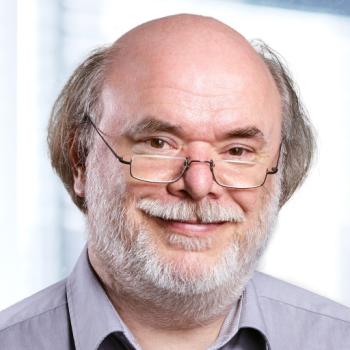Research Projects in Cooperation with Industry
Over the past decade, Saarbrücken computer scientists have worked together with more than 130 companies, including 82 international corporations such as Samsung, IBM, EADS, Microsoft, Bosch, Airbus and Siemens. Following are selected examples:
Real-Time Ray Tracing
With real-time ray tracing, today’s usual visualization techniques in industrial development are replaced by a new, more powerful hardware/software architecture. The interactive graphics technology makes it possible to display, move and modify 3D objects. Even shadows, refractions and reflections can be displayed realistically. In the automotive industry, in aircraft construction and in other industrial development processes, planning errors can be made visible and eliminated early on. Volkswagen AG has already invested around 20 million Euro in the construction of two visualization centers based on ray tracing technology.
Partners:
VW, BMW, Daimler-Chrysler, Intel, Nvidia, etc.

Verisoft: Formal Verification of Computer Systems
Verisoft is a long-term research project supported by the Federal Ministry of Education and Research. The goal is the verifiably correct functioning of computer systems. Participants include the German Research Center for Artificial Intelligence and the Max Planck Institute for Informatics in Saarbrücken, the Department of Computer Science at Saarland University, and both mid-sized (AbsInt GmbH) and large-scale (BMW, Infineon, T- Systems) industrial partners.
Partners:
BMW, Infineon, T-Systems, AbsInt GmbH
66123 Saarbrücken

AVACS: Automatic Verification and Analysis of Complex Systems
Faults in safety-critical systems in aircraft, trains or automobiles can be life-threatening. This makes it all the more important that they are thoroughly tested. Until now, only limited aspects of these systems, such as their stability and continuity, could be checked and analyzed. Computer scientists from the Universities of Freiburg, Oldenburg and Saarbrücken, as well as the Max Planck Institute for Informatics in Saarbrücken, are analyzing such systems within the AVACS Collaborative Research Center. They aim to comprehensively and holistically examine complex systems, for example automatic distance controls or braking assistants. They also intend to make it possible to predict how reliable a system is.
66123 Saarbrücken

ARTIST2: Advanced Real-Time Systems
The strategic goal of the European network of excellence ARTIST2 is to strengthen European research in the area of embedded systems and to further develop this multidisciplinary field. ARTIST2 brings together the most renowned European research groups from the various relevant fields to form a combined scientific discipline.
The participants come from electrical engineering, control engineering, applied mathematics and computer science. The Saarbrücken Chair for Compiler Construction and the spin-off company AbsInt Angewandte Informatik Saarbrücken participate in the network with regard to, among other things, time analysis of real-time systems.
Partners:
Many academic and industrial partners in Europe.
66123 Saarbrücken

Network-Integrated Multimedia Middleware (NMM)
Network-Integrated Multimedia Middleware (NMM) makes it possible to create flexible and fully synchronized multimedia scenarios using applications, devices, and compute resources distributed across the network. Even on the road, one can exchange data with all multimedia devices, including – and so far this is possible only with NMM – controlling them from a distance. This results in completely new, “virtual” devices: a mobile phone can receive a TV program from the home satellite connection via GPRS or UMTS, and a recording from the video recorder can be output simultaneously to any number of devices such as a TV, PDA or PC. Each device can run on a different platform: along with Windows XP and various Linux systems, Windows Vista, Mac OS X and the PlayStation 3 Cell processor are also supported.
Partners:
Motama GmbH

